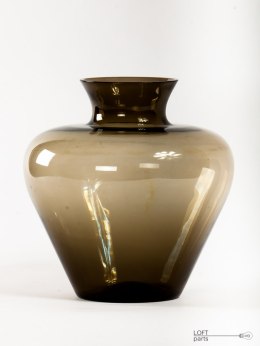-
Shopping cart is empty
-
x
Test paska
-
Language

-
Currency : EUR
-
Customer zone
-
Shopping Cart ( 0 )
-
Shopping cart is empty
-
x
For free delivery are missing -,--Free delivery!Sum 0,00 €Price includes discounts -

-
Shopping cart is empty
-
x
- Categories
- Search
-
Wilhelm Wagenfeld
He lived from 1900 to 1990. German industrial designer. A graduate of the Bauhaus and a member of the Werkbund association, which promotes the ideas of modernism. He specialized in designing objects of glass and metal. Some of his designs are still produced today. He believed that everyday objects should be both inexpensive for the worker and good enough for the rich man. As a young boy, he attended a applied art school in his native Bremen and apprenticed in the design office of the Koch & Bergfeld factory, which produced, m.in cutlery. Then he received a scholarship, thanks to which in the years 1919-22 he continued his education at the design school in Hanau, where he learned goldsmithing. In 1923, together with two partners, he opened his own workshop in Worpswede and began his studies at the progressive arts and crafts school Bauhaus in Weimar. It was there that one of his most famous objects was created - a desk lamp known as the Bauhaus Lamp, from 1924. He designed it together with Carl Jakob Jucker. After the Bauhaus moved to Dessau in 1925, Wagenfeld remained in Weimar and took over the metallurgy studio at the State Academy of Crafts and Architecture there. He was released in 1930 under pressure from the Nazis. Since then, he worked mainly as a designer for industrial plants, but he did not give up teaching. In 1931 he entered into cooperation with the glass factory Jenaer Glaswerk Schott & Gen. From 1935 to 1947 he was artistic director at the Vereinigte Lausitzer Glaswerke in Weisswasser-Oberlausitz. At that time, he designed many popular and timeless designs of glass tableware. In 1937, his works were shown at the World Exhibition in Paris and won the Grand Prix. In 1940 Wagenfeld was awarded at the Triennale in Milan. After the Second World War, he received several offers of didactic work. He taught at the Academy of Fine Arts in Berlin and was department director at the Institute for Civil Engineering of the German Academy of Sciences. In 1950-77 he collaborated with the Württembergische Metallwarenfabrik in Geislingen. In 1954 he founded a workshop in Stuttgart, where he worked on new technologies for industry and tested the properties of various materials. There he developed projects for renowned labels such as Rosenthal, Braun and Pelikan.
Feel free to purchase items designed by Wilhelm Wagenfeld.
|
I bądź na bieżąco ze wszystkimi nowościami! |
|


